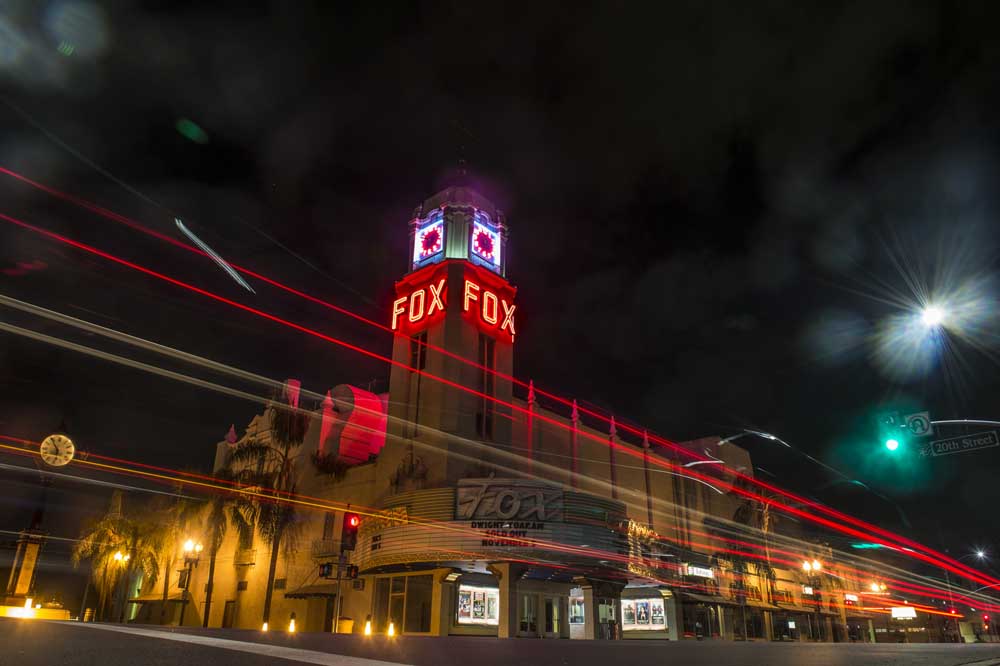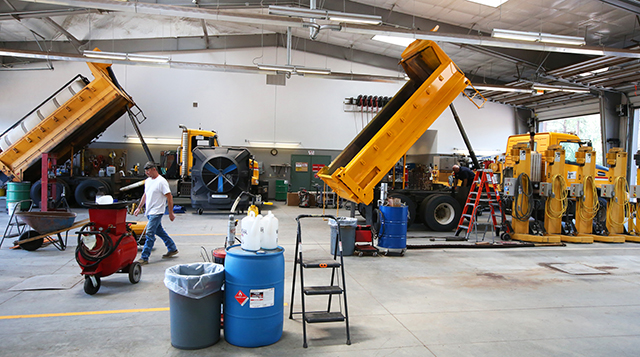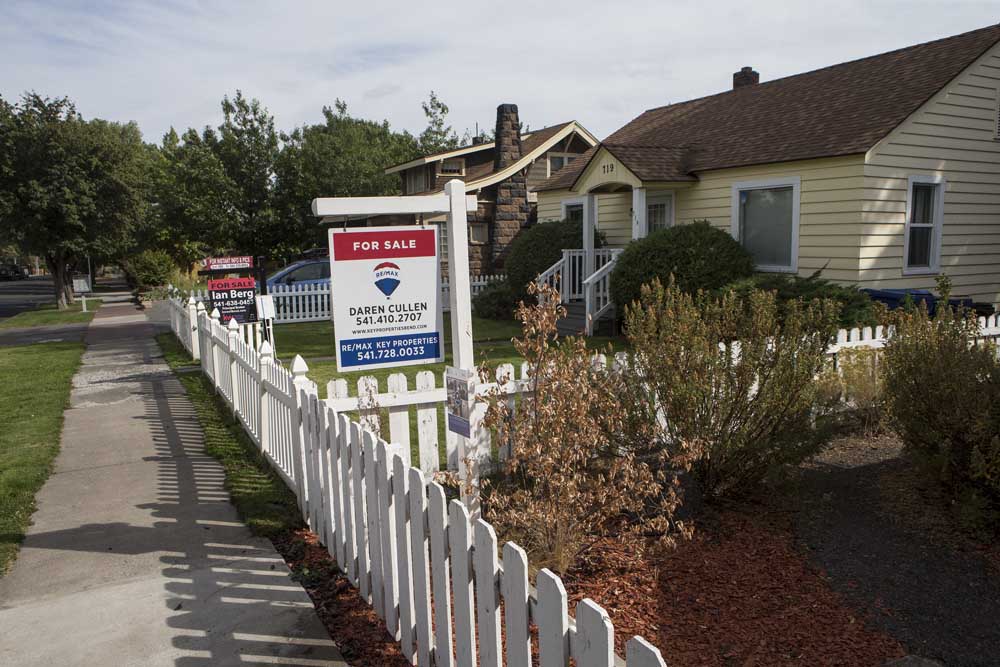Downtown Bakersfield: a city (un)stuck in time
Published 12:00 am Sunday, November 29, 2015

- Photos by Andrew Seng / Sacramento (Calif.) Bee via Tribune News ServiceThe Fox Theater, opened in 1930, presides over the low-rise downtown of Bakersfield, California.
BAKERSFIELD, Calif. — Jutting skyward, adding impressive verticality to low-rise downtown Bakersfield, the Fox Theater’s tower presides over the H Street bustle and hum with stolid, deep-rooted grandeur. Scalloped and columned, a handsome marriage of Spanish colonial revival and art deco, the tower invites your gaze up beyond its concrete base, past its red-lettered signage, tapering to its ornate clock face where —
Hold on. That clock. The big hand is on the 10, the little hand near the 6.
Trending
It reads 5:50, several hours off from the light-emitting diode numbers on your wrist. Come back a few hours later, and nothing has changed. It is still 5:50 at the Fox. It is always 5:50, for the clock hands remain riveted in place — accurate twice a day, as the old joke goes, but rendered hopelessly behind at all other times.
Easy, perhaps too easy, to impart deep meaning about Bakersfield’s civic soul from the clock tower’s defiance of the immutable laws of physics. You can be dismissive and call it a town stuck in time, amberized like an insect. You can be as snarky as The New York Times, which once proclaimed this San Joaquin Valley kiln a “a sleepy Nowhereseville in which laborers saunter around with unironic trucker caps perched high on their heads.”
You can be self-satisfyingly snooty, in other words.
Yet there is an undeniable charm to downtown Bakersfield’s fossilized, late-1950s feel. If you want modern conveniences — an Applebee’s and an Apple store; a Chipotle and a Nordstrom — alight to the 150-square-mile sprawl of the city’s outer, strip-mall-saturated regions. Downtown Bakersfield clings to the past with buttons and buckles, not Velcro. Sure, there’s a fancy arena and a few chain hotels anchored on Truxton Avenue. But on the grid, streets numbered and lettered with straightforward humility, the past isn’t even the past, as Faulkner wrote.
This is a good thing. This is downtown Bakersfield’s charm. It’s always 5:50 here, always 1958 (with its distinctive late-Eisenhower, early “American Graffiti” tinge).
Walk down 19th Street between H and M streets, the heralded Antique Row, and you are transported to a more innocent age, when blenders had only three speeds, when pinafore aprons were worn by housewives for utility, not by cross-dressers for campiness, when waxed platters of 45s were the MP3 downloads of the day.
Trending
Check out the well-preserved former Weill’s Department Store building, now housing a Western Union office, a jeweler’s, a Farmers Insurance branch and a bridal shop. Look across the street at the Kress Building, circa 1930, its art deco masonry intact and gleaming. Step into the Woolworth Building, now housing the Five and Dime Antique Mall but retaining the original open floor plan, black-and-white diamond terrazzo tile flooring, rows of fluorescent lights and ceiling fans and, most impressive, the original red, cursive signage of the erstwhile F.W. Woolworth empire. Venture farther in and sidle up to Woolworth’s Diner, its red vinyl counter stools buffed to a shine and a bow-tied, black-capped “soda jerk,” pad and pencil poised, ready to take your grilled cheese and chocolate milkshake order.
A few blocks west, near the Fox, is downtown’s other history-steeped sentinel, The Padre Hotel. It is a hulking 1920s Spanish colonial once owned and (sort of) operated by the irascible Milton “Spartacus” Miller, whose battles with city code inspectors became so heated that he installed a mock missile on the roof, pointed at City Hall, and once unleashed a flock of turkeys in the City Council chambers. Reopened in 2010, under new management, the post-Miller Padre is a monument to tasteful gentrification. The character of the original is preserved right down to rococo wallpaper with gushing oil derricks, cowboy hats and cattle skulls, but the interior has been gussied up and boasts high-end eateries and bars, one of which is adorned with a ceiling mural of Miller bearing the inscription, “Spartacus Gladiator Against All Forces of Oppression,” above the pool table.
Mosey just a little farther afield, yet still considered downtown, to the Kern County Museum, a loving repository of the Greater Bakersfield area’s history. Included in its 16-acre outdoor space are preserved homes and civic buildings, neon signs from long-shuttered businesses, Southern Pacific engines and cabooses, oil-drilling rigs, pump jacks and, its latest addition — still under wraps behind a green fence — local country crooner Merle Haggard’s childhood home, an old boxcar that goes a long way in explaining Merle’s rough-edged musical oeuvre. The unveiling of Haggard’s home has yet to be determined, said Lori Wear, curator of collections.
And, yes, the museum has a wing devoted to the vaunted Bakersfield Sound, the anti-Nashville, Telecaster-driven country subgenre that, like downtown itself, peaked in the late ’50s. But a visit to the museum’s “Black Gold Exhibit” is proof enough that the real Bakersfield Sound is the hydraulic creak and wheeze of oil wells and bobbing pump jacks.
This tribute to fossil-fuel technology is advertised to be interactive, but perhaps that’s based on 1950s standards. No fewer than six of the “interactive” displays were out of order on a recent visit, as hastily scrawled signs taped to the dormant video screens attested. Others only offered crackly audio from blacked-out screens, including the introductory 10-minute film in the re-created movie theater. The biggest disappointment: The much-praised by Yelpers “simulated travel under the sea in a diving bell to learn how oil is formed” exhibit was closed, a sign with an arrow promising “More To See This Way.”
Thankfully, there was more to see. All manner of heavy machinery, from the tri-cone milled tooth rotary drill bit to channel wrenches and biscuit cutters, were displayed, along with vintage metal oil company signs and cans. The videos (or, in many cases, just audios) that were functioning served as a celebration of all things petroleum-based. A wall featuring “Everyday Products made from Petroleum: Imagine what life would be like without them” showed Styrofoam cups, Hefty twist-tie garbage bags, plastic McDonald’s “Happy Meal” toys and Tupperware containers.
It is as if the past 40 years of environmental awareness of how landfill-bloating these nonbiodegradable items can be had not occurred. One video showing a burger in a foam container began with a stentorian narrator right out of an elementary-school film strip intoning, “What does this big, juicy cheeseburger have in common with this home under construction? Give up? Everyday, millions of people all over America are served meals in containers made from a special plastic substance called Styrofoam, polystyrene thermoplastic. Although we take them for granted, foam containers are really quite remarkable. They’ll keep your burger piping hot and your salad crispy cold and your nachos won’t make them sag. This is the same as the insulation material (used) in the housing industry.”
The video ended with this tagline: “In the world of petrochemicals, good things happen when the chemistry is right!”
Another showed a hard-hatted, flannel-shirted driller on a rig. He looked dead-on into the camera and said, with G-dropping folksiness, “We’re gonna need to drill a lot more if our country’s gonna become more energy independent. We’re gonna do our part. That’s a promise. Thanks for comin’ by.”
Steppin’ out of the Black Gold exhibit, blinking into the brightness of another hot, hazy Bakersfield afternoon but nonetheless bathed in the warmth of nostalgia, you get a hankering to keep the mood going by dining at the Woolworth luncheonette counter. It’s only a mile or two from the Kern County Museum and, along the way, you pass a series of businesses and organizations you didn’t know still existed, such as Bakersfield Cash Registers, “NRC Authorized Service” on 24th and Chester streets; Josten’s “Caps, Rings Letterman’s Jackets” on 20th; and Going Underground “Records and 45s” on 19th.
By this point, you wanted downtown Bakersfield to go all-in, as they say, to own its 1950s vibe and pass a city ordinance to banish the juice bar, sushi joint, Starbucks and Pilates/barre studio from downtown to the sterile suburbs. But the old-school mood returns once you step into the Woolworth’s Diner. Owner Jeremy Trammell, in white shirt and black bow tie, wipes the counter and hands you a paper menu. The prices aren’t exactly ’50s cheap ($8.87 for a thick turkey sandwich and iced tea) but certainly not big-city rip-off high, either.
Afterward, you stroll the aisles of “vintage” items, from clothing to furniture to pencil sharpeners, and run into Evelyn Merriman, 82, who manages Five and Dime Antique Mall for her nephew, owner Mark Sheffield.
“I’m in love with this building,” she said. “We got an award about five years ago for being one of the best art deco buildings in California. The certificate is on the wall over there.”
When the three-story Woolworth’s finally closed in 1994, Sheffield snapped it up, Merriman said, aiming to preserve it in mint condition and give it new life as an antique store.
“They began renovation, but there was absolutely nothing to be done,” she said. “It was so sound and in such good shape. Almost everything you see is original. I remember as a young person working downtown having to wait in line out in the street waiting for a stool. The best part about the building is that Woolworth’s let us keep the signs. Those are quite valuable, those signs.”
One lunchtime browser, Lauren Montana, who works at the clock-stopping Fox Theater, said she liked the nostalgia-tinged Woolworth’s vibe, even though, at 30, she is far too young to have experienced it firsthand.
“No, but I know of it,” she said of the history. “The outside of the building is like stepping back in time.”
Montana is one of those young professionals whom cities pine to have live downtown, and she talks up trendy local places such as Chef’s Choice Noodle Bar and Luigi’s, and the fine dining and bar scene at The Padre. But Montana, a native who graduated from California State University, Bakersfield, acknowledges that, to outsiders, Bakersfield will never be a hip urban milieu. But she’s fine with that.








